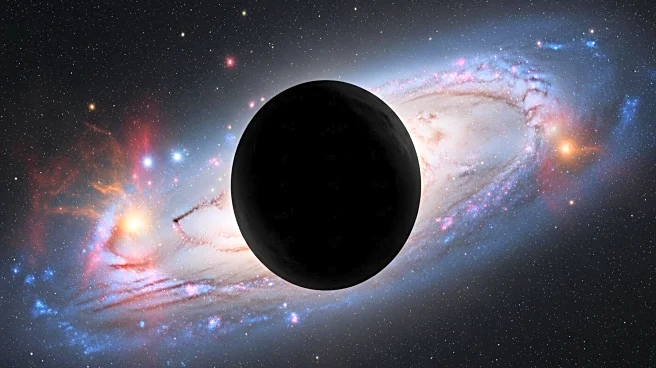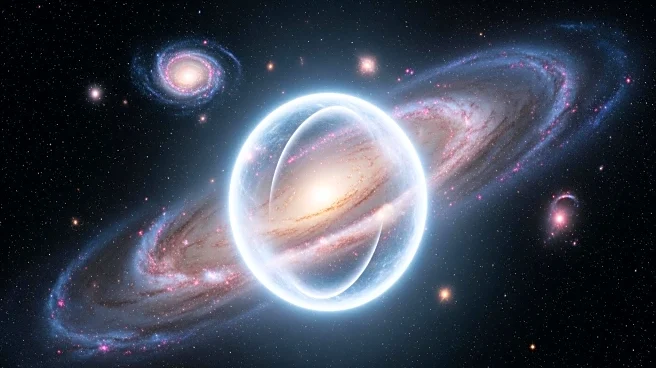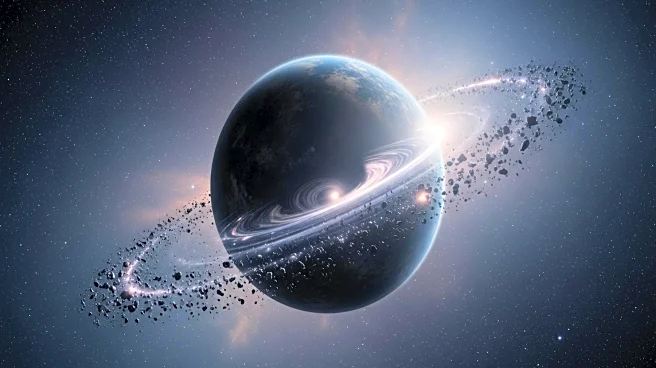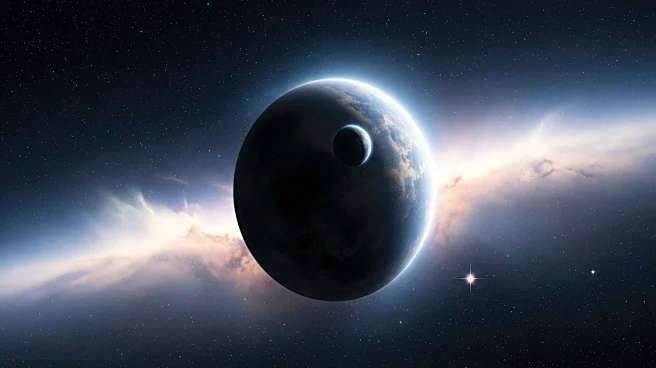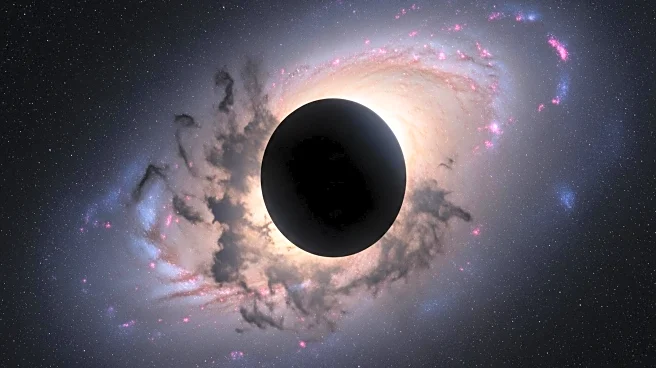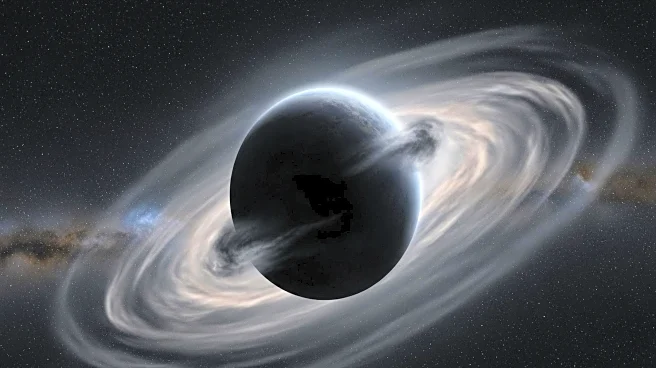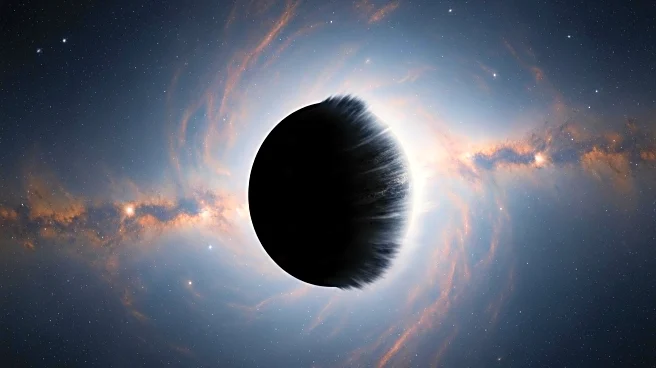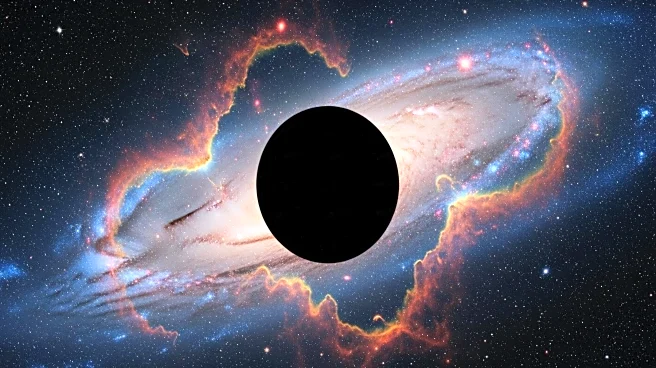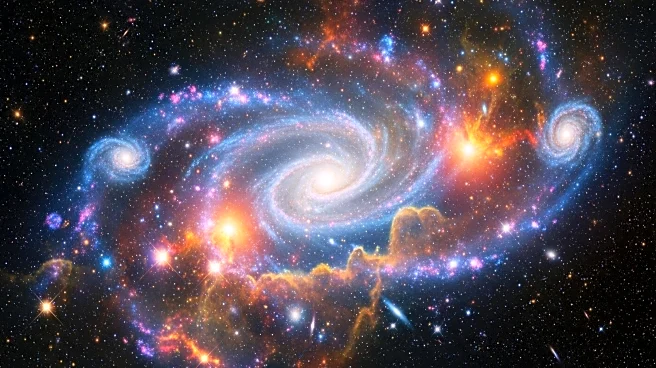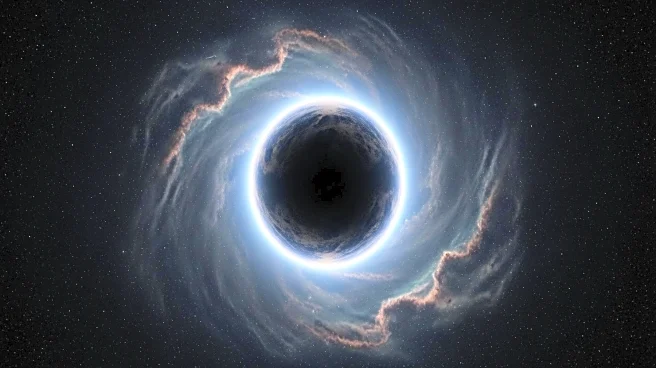What's Happening?
Astronomers have observed a rogue planet, Cha 1107-7626, undergoing an unprecedented growth spurt, consuming gas and dust at a rate of six billion tonnes per second. This discovery, made using the European Southern Observatory's Very Large Telescope, marks the strongest accretion episode ever recorded for a planetary-mass object. The planet, located 620 light-years away in the constellation Chamaeleon, is still forming and is surrounded by a disc of material. The study, published in The Astrophysical Journal Letters, suggests that rogue planets may share formation characteristics with stars.
Why It's Important?
This discovery provides new insights into the formation and growth of rogue planets, which do not orbit stars and are free-floating in space. Understanding the accretion process of such planets can help astronomers learn more about the early stages of planetary formation and the conditions that lead to their development. The findings also blur the line between stars and planets, suggesting that even low-mass objects can exhibit star-like behaviors, such as strong magnetic fields driving accretion events.
Beyond the Headlines
The study raises questions about the origins of rogue planets, whether they form like stars or are ejected from planetary systems. The detection of water vapor during the accretion episode, a phenomenon previously observed only in stars, further complicates the understanding of these objects. Future observations with the Extremely Large Telescope could reveal more about these enigmatic planets, potentially reshaping our understanding of planetary and stellar formation.

